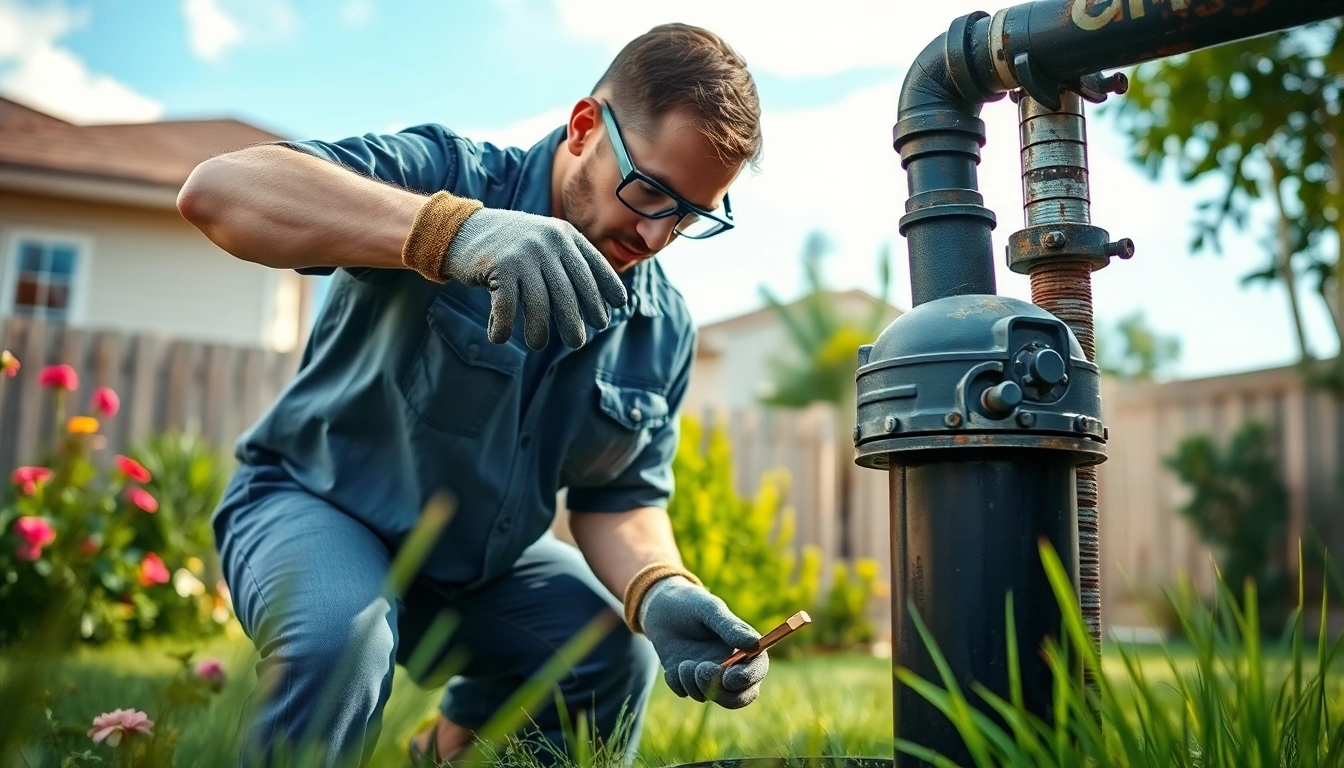
Essential Steps for a Successful Well Pump Replacement Process
Understanding the Basics of Well Pump Replacement
For homeowners relying on a well for their water supply, the well pump is a crucial component that ensures access to clean and safe water. Over time, these pumps can fail due to various reasons, requiring a well pump replacement. Understanding the fundamentals of well pumps, the signs that indicate a replacement is necessary, and the types available can significantly impact the efficiency and lifespan of your water system. If you’re contemplating a well pump replacement, this guide offers valuable insights and best practices for a successful transition.
What is a Well Pump?
A well pump is a mechanical device responsible for drawing water from underground aquifers into your home. It consists of various components, including the motor, pump head, impellers, and casing, which work together to lift groundwater to the surface. There are primarily two types of well pumps, submersible and jet pumps, each suited for specific well conditions and depths.
Signs You Need a Well Pump Replacement
Recognizing the signs that your well pump requires replacement is vital to preventing water shortages and potential damage. Here are common indicators:
- Insufficient Water Pressure: If you notice that your water flow has diminished significantly, this could signal pump failure or blockage.
- Unusual Noises: Strange sounds, such as grinding or excessive noise during operation, can indicate mechanical issues within the pump.
- Frequent Cycling: If your pump turns on and off more frequently than normal, it may be struggling to maintain pressure, suggesting it is time for a replacement.
- Discolored Water: If your water appears rusty or contaminated, it might be coming from a failing pump.
- Age of the Pump: Most pumps last between 10 to 15 years. If your pump is nearing this age, consider replacement before it fails.
Types of Well Pumps Available
There are several types of well pumps, each designed for different well depths and applications:
- Submersible Pumps: These are designed to be submerged in water and are suitable for deep wells. They are efficient and deliver a steady water supply.
- Jet Pumps: Typically used for shallow wells, jet pumps can be installed aboveground and create suction to draw water. They are easier to service than submersible pumps.
- Turbine Pumps: Ideal for deep wells, turbine pumps can effectively lift water from depths over 100 feet but are more complex to install.
- Hand Pumps: These are manually operated pumps and are suitable for off-grid or emergency situations.
Cost Factors to Consider in Well Pump Replacement
The cost associated with replacing a well pump can vary widely based on several factors. Understanding these can help you make informed decisions and budget accordingly.
Average Costs for Different Well Pump Types
The average cost to replace a well pump can range from $2,500 to $6,000, depending on the type of pump, well depth, and installation complexity. Submersible pumps typically cost between $1,200 to $2,000 for the unit alone, while jet pumps can range from $800 to $1,500. Moreover, turbine pumps may cost up to $7,000 or more, particularly for deeper installations.
DIY vs Professional Installation Costs
While some homeowners may consider a DIY approach to save money, this can be risky without the proper experience. Professional installation typically adds $500 to $2,000 to the total cost but ensures safety, compliance with local codes, and optimal performance. If you lack the necessary tools or don’t feel confident in your skills, hiring a professional is the prudent choice.
Hidden Costs to Watch Out For
When budgeting for well pump replacement, be mindful of potential hidden costs, such as:
- Permits and Inspections: Many areas require permits for pump installation, which can add to the total cost.
- Electrical Work: Upgrades, additional wiring, or electrical service modifications may be needed, leading to increased expenses.
- Regular Maintenance Costs: Future replacement parts or maintenance checks may not be considered upfront but can arise later.
Preparing for Well Pump Replacement
Proper preparation can streamline the well pump replacement process, minimizing downtime and ensuring a successful installation.
Assessing Your Current System
Before replacement, evaluate your existing well system. Inspect the well for any visible issues, such as rusted pipes or sediment buildup that may affect pump performance. Additionally, checking your current pump’s specifications can help you select a like-for-like replacement or an upgrade that better meets your water needs.
Choosing the Right Pump for Your Needs
Selecting the appropriate pump involves considering several factors, including:
- Well Depth: Measure the depth of your well to determine if a submersible or jet pump is more suitable.
- Water Demand: Calculate your household’s water consumption to determine the required flow rate and horsepower.
- Local Regulations: Consult local codes to ensure compliance, particularly concerning water quality and installation practices.
Gathering Necessary Tools and Equipment
Whether you choose to handle the replacement yourself or hire professionals, having the right tools is essential. Common tools for pump replacement include wrenches, pliers, screwdrivers, and safety gear. Additionally, consider renting a hoist or pump puller if you’re dealing with a submersible pump to make the lifting process easier and safer.
Step-by-Step Guide to Well Pump Replacement
Replacing a well pump involves several critical steps that must be performed meticulously to ensure that your new pump functions correctly.
Safely Removing the Old Pump
To begin the replacement process:
- Shut off the power to your well pump to prevent accidental operation.
- If applicable, disconnect the piping and electrical connections to the old pump.
- Use a hoist or puller to carefully remove the old pump from the well, taking care to avoid damaging the casing or surrounding components.
Installing the New Pump Correctly
Once the old pump has been removed, follow these installation steps:
- Position the new pump in the well according to the manufacturer’s instructions, typically ensuring that it is correctly aligned with the piping.
- Reconnect the electrical wiring and plumbing according to local codes, ensuring all connections are tight and leak-free.
- Once installed, restore power to the pump.
Testing the Pump Post-Installation
After installation, conduct thorough testing:
- Turn on the pump and allow it to prime, checking for leaks at the joints and connections.
- Monitor the water flow for clarity and pressure, ensuring it meets your household demands.
- Check the pump’s operation, listening for unusual noises that could indicate problems.
- Consider running the pump for an extended period to ensure it operates smoothly.
Maintenance Tips After Well Pump Replacement
Regular maintenance of your well pump is critical to ensuring its efficiency and prolonging its lifespan. Here are practical tips to consider.
Regular Maintenance Checklists
To keep your well pump in top shape, perform these regular checks:
- Inspect pressure gauges: Regularly check for fluctuations that could indicate problems.
- Check water quality: Test the water periodically for contaminants, as issues with the pump can affect water safety.
- Monitor electrical connections: Ensure connections are secure and show no signs of corrosion or wear.
- Keep well area clean: Clear debris and potential contaminants from around the wellhead to protect the pump.
Signs That Indicate Future Problems
Be vigilant for signs of potential issues following installation. Unusual noises, fluctuations in water pressure, or declining water quality should prompt immediate attention.
How to Extend the Life of Your Well Pump
To prolong the lifespan of your well pump, consider implementing practices such as:
- Proper sizing: Ensure the pump is adequately sized for your specific water needs to avoid overworking it.
- Scheduled inspections: Regularly schedule professional inspections to identify and rectify potential issues before they escalate.
- Maintain surrounding areas: Keep vegetation and debris away from the well area to minimize the risk of contamination.
Replacing a well pump is a significant undertaking that requires careful consideration, preparation, and skilled installation. By understanding the types of pumps available, knowing when to replace your system, and following through with proper maintenance, you can ensure a reliable water supply for years to come.
